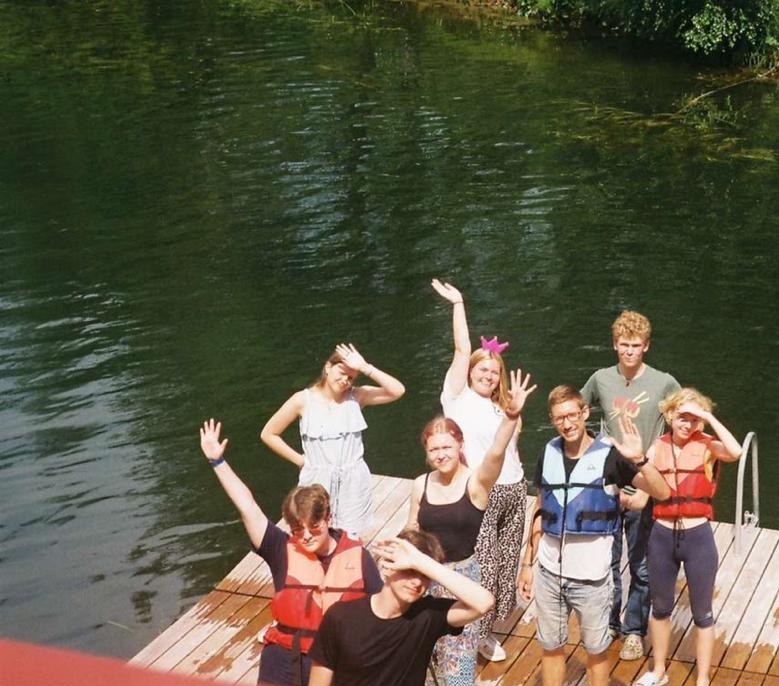
Implementing energizers in workshops as a way to achieve a higher quality of participation.
Esseen tyyppi: Yksilöessee / 2 esseepistettä.
The structure of Proakatemia includes two four-hour learning workshops in a week, where the team gathers to learn about a topic that furthers their studies. As a principle of team learning, the workshops follow the division of responsibility and the idea of each team member contributing to the overall knowledge inside the team. This also means that the team member has the responsibility of organizing the workshop in a way that the topic is aligned with the team’s collaborative goals, benefits the team, the content of the workshop has high validity with authentic content and the team members could contribute by participating in a meaningful discussion among the teammates.
While keeping the aforementioned goals in mind, the host will have freedom in terms of designing the workshop. Oftentimes, the workshop will include valuable dialogue and discussion, which is a sedentary activity. A sedentary activity combined with focusing for longer periods of time tends to cause fatigue and the energy levels may drop, causing the participants to be more distracted.
The essay explores the nature of energizers and whether energizers should be considered when planning for a workshop. Finally, the essay includes a few short energizers below to offer inspiration.
An energizer refers to an activity designed to increase the energy of the group. Energizers are typically used in the beginning of an activity as a way to offer an activity, which wakes up the participants and helps them align themselves with the rest of the team through typically short games. Ultimately, energizers set an atmosphere and a space where the team has accomplished something together, providing the members of the team with a feeling of unity and success. Such practice removes apprehension from the members and adds trust to enable more meaningful conversations. Energizers may range from a being more active to being more thought-provoking, however, they share a similar purpose to the team.
While the energizers serve a purpose and provide a way to unify the team, the host should be mindful of the components of the energizer. The length of the energizers depends largely on the workshop content, however, the idea is to boost the participants´ moods and for this, a short energizer under 10 minutes works best. Another component to consider is how many energizers is needed.
When following the structure of Proakatemia, the participants typically have two to three breaks, where they are able to go to the kitchen for coffee, visit the bathroom or do other activities such as talk with their friends. Keeping these in mind, the energy level of the participants returning from their break and having their needs met oftentimes equals to a recovery in attention at first but a slump soon after. Thus, the suggestion for using energizers would be either after returning from a break to raise the attention level higher or when the format of the activities will change to make the change more visible and separated. Additionally, there should be a variety of energizers to prevent a routine of the same energizers repeating themselves. Finally, the energizers should be added to the workshops mindfully to prevent overusage and thus also the loss of value in them. Similar thoughts were echoed at the Darden School of Business, whose learning organisation structure does not match Proakatemia’s in the slightest but has a focus on energizing. In addition to the aforementioned suggestions, the article also suggests being honest and addressing the issue of low energy or relating materials and discussions to topics that were discussed a few weeks back to help the teammates in the reinforcement of the importance of paying attention.
There is a direct link between the raised energy levels and active participation: with the raised energy level it is most likely that the participants of the workshop will retrieve their focus and provide a quality input to the workshop.
Finally, here are a few short ideas for energizers:
Rock-Paper-Scissors.
Normal rock-paper-scissors, the loser cheers the winner on as they play rock-paper-scissors again with another player. The game ends when everyone cheers for the winner.
Alternatively, for a quieter version the loser goes and places their hands onto the winner’s shoulders, walking with them until the winning player loses.
Human wave.
The team is in a circle, someone starts ‘the wave’ by lifting their hands up and cheering, ‘the wave’ with the cheering continues for a couple of rounds until everyone is energized.
Moving.
In a circle, everyone shakes their arms-legs, limb by limb until they’re ready and shaken up.
Stretching.
The facilitator does a series of stretching exercises or appoints someone to show a couple of stretching exercises.
Check-out questions.
“If this workshop was a ….., what would it be and why?”
Eg “If this workshop was a transportation method, what would it be and why?”
“The workshop was a bright yellow plane, because we had a lot of positive understandings and it felt as if the time was flying!”
Conclusively, energizers are a great way of boosting the group energy and morale as long as it is done in moderation. The writer warmly recommends implementing energizers in workshops and wishes that your workshops will have focused people and forward-thinking thoughts!
Sources:
Bruner, B. Managing Student Energy. November 2017. Darden School of Business. https://blogs.darden.virginia.edu/brunerblog/2017/11/managing-student-energy/
Fox, L, Lambden, K. July 2017. Icebreaker, Energizer and Recap Activities. CommCare. https://confluence.dimagi.com/display/commcarepublic/Icebreaker%2C+Energizer+and+Recap+Activities
Cover photo: personal collection, summer camp where energizers were often used and favoured.


